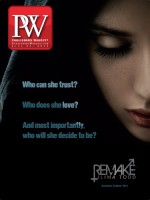Here’s the good news: when it comes to libraries and e-books, there’s been progress. All the major publishers are now participating in the library e-book market, and there are a number of competing platform providers in the space. The big question now is, can the library e-book experience meet users’ expectations?
At a PW executive breakfast held at Random House June 16, audience members and a panel of librarians, publishers, and service providers engaged in a freewheeling two-hour discussion of the pressure points in the library e-book market. And while there were no neat solutions, and more than a few points of contention, a consensus did emerge: more experimentation is needed in the market—the bolder the better.
In one of the more provocative proposals, Mitchell Davis, founder and chief business officer of BiblioBoard, a digital platform provider, told the audience that libraries should consider moving away from their focus on e-book bestsellers. Instead of spending money on a limited number of frontlist e-book titles, generating long waits in hold queues and patron dissatisfaction, why not concentrate limited resources on building a better user experience, based on the library’s “long tail” collections?
Davis dubbed the idea his “Breaking Bad” model. He explained that after watching the first four seasons of the popular show through his subscription on Netflix, he paid full price for instant access when season five was released, rather than waiting for free access to kick in. The same can work for libraries and publishers: if they focus on building a satisfying user experience, like Netflix, with unlimited, multiuser access to backlist works, that experience would drive frontlist sales of new works.
Almost immediately, however, that idea met with resistance. One publisher in the audience noted that librarians routinely tell her that they need access to current titles to meet patron demand. But just as Netflix users don’t expect free access to the most current content, Mitchell countered, most library users would also temper their expectations if it meant a better user experience—especially since most users are already unable to access popular bestsellers without long wait times.
Tim Rogers, director of NC Live, an initiative serving a range of public and academic libraries in North Carolina, told users about his experience working with BiblioBoard to build an e-book platform. He noted that, although just a handful of publishers had so far had signed on to offer content, library administrators were optimistic the program would grow, and, over the long term, enable libraries to offer a better product and, perhaps most importantly, to spend more money on content.
The breakfast panel was the latest entry in a library e-book conversation that appears to be quickly shifting away from basic questions of publisher participation to questions of user satisfaction and future growth. At a BEA panel last month, Jeff Jankowski, v-p at Midwest Tape, whose new Hoopla e-book offering recently went live, also emphasized the importance of improving the library user’s e-book experience.
In his talk, Jankowski stressed that libraries and publishers must work together to leverage technology the “way technology is supposed to be leveraged,” and argued that the old “video store” model of one user, one copy serves only to generate more user dissatisfaction. He urged publishers to look past placing “artificial restrictions” on the e-book lending process toward what they might gain from a more robust offering. “I would just encourage everybody to reimagine libraries as retailers,” Jankowski said. “If publishers really engaged and gave libraries a better experience, what could they do with that?”
As librarians head to the ALA annual conference, which gets underway this week in Las Vegas, e-books will once again be a hot topic. There will be informal talk in the convention center corridors. There will be vendor pitches on the show floor, and a number of e-book sessions on the professional program, including an update from the ALA Digital Content Working Group (DCWG), whose work helped bring all the major publishers into the e-book lending game over the last two years. But despite the progress made in recent years, which Columbia University associate university librarian (and DCWG co-chair) Robert Wolven detailed for attendees of the PW breakfast event, what happens now is what matters most.
Will those publishers slow to engage with e-books in libraries also be slow to try new things? Will they experiment with new models and initiatives from libraries? Or will publishers and libraries settle on a plateau, offering basic access through the current models, content to wait and see what happens next?
“The answer is, we don’t know,” Wolven said. But the panelists agreed: with new e-book subscription models emerging, self-publishing making strides, and Amazon and Netflix shaping user expectations, readers will likely not be content just to wait and see.



 Volume 261
Issue 25
06/23/2014
Volume 261
Issue 25
06/23/2014





